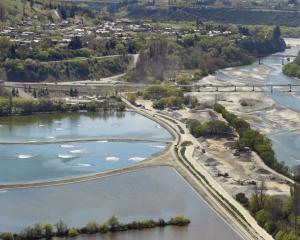A total of 92 solar panels have been erected around Queenstown in recent months in preparation for Airways New Zealand to introduce its $2.5 million wide area multilateration (MLAT) surveillance system.
Airways communications and surveillance senior engineer Roger Kippenberger told the Otago Daily Times yesterday the project was "60% of the way through", but the early onset of winter had delayed the commissioning of the system.
MLAT will allow Airways staff in the Queenstown Airport control tower to accurately locate all aircraft operating in the Queenstown basin area, resulting in improved safety and flight regularity.
The altitudes at which jet aircraft had to fly - because of terrain constraints in the Queenstown basin - restricted the pilots' ability to observe other aircraft in their area, impacting on air traffic controllers' situational awareness and visibility, Mr Kippenberger said.
The system's provision of monitoring of all aircraft operating within controlled airspace would significantly reduce that risk.
Mr Kippenberger said there were 14 sensor sites around Queenstown, two of which were solar powered and included a solar array.
There were now 48 solar panels atop Mt Nicholas, at the head of Lake Wakatipu, and another 36 panels at Rock Peak.
A further eight panels had been erected at Nevis Bluff as a reference site, he said.
Each panel was 12m long and about 3m high, but they were not visible to the naked eye, Mr Kippenberger said.
"If you've got binoculars [you might be able to see them] - it's a really long way [away]."
Each of the 14 sensor sites also comprises of a 70cm sensor antenna, linking equipment and either a cabinet or a small portocom hut to house equipment and a power supply.
Mr Kippenberger said most of the masts were 8m in height, with one 12m tall.
Wooden masts had been erected "on the valley floor" and at Frankton, with steel masts erected on the mountains to withstand the conditions.
"It's going very well . . . we've got another couple of masts to stand up and then it's just the technical work."
Mr Kippenberger expected the installation of equipment to be completed soon, before extensive testing was carried out on the system.
The testing was expected to be completed in September with the system commissioned in Queenstown in November, he said.
Originally, it had been anticipated the system would be fully operational by mid-July, in time for the marginal winter weather.
However, the early onset of the 2009 winter had delayed progress on the project.











